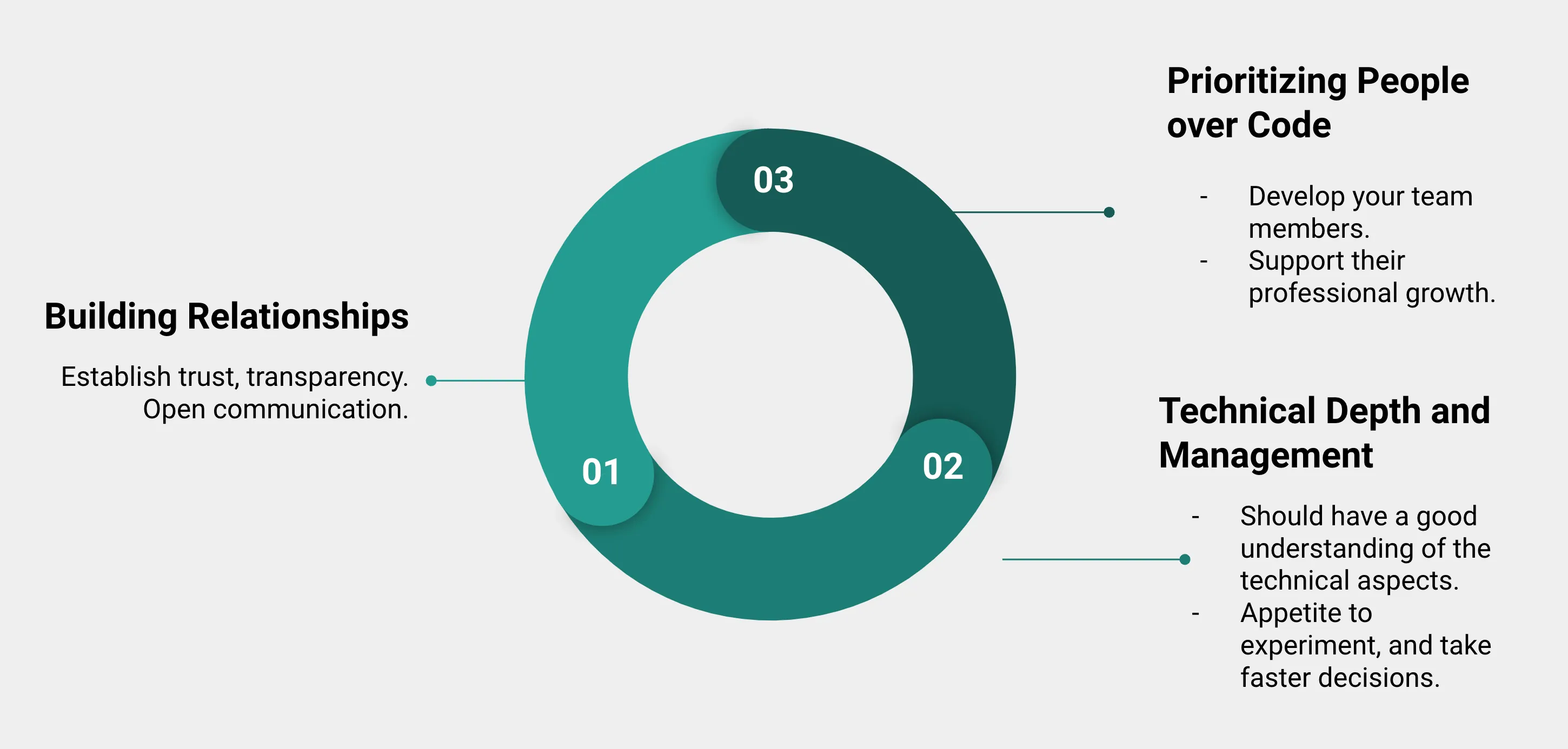· tutorials · 4 min read
By Ankit JainGuide to Effective Software Engineering Management
Moving from an individual contributor to an engineering leader role? Here are some tips and guidance.

If you are transitioning from an individual contributor (IC) role to an engineering manager, don’t think of this as a minor shift in responsibilities. The new role requires a focus on people, processes, and strategic decision-making rather than individual technical contributions. This guide offers practical advice, frameworks, and resources to help you succeed as an engineering manager.
Understanding the Role of an Engineering Manager
Becoming an engineering manager is not just a promotion but a career change. The focus shifts from technical contributions to team success, process optimization, and strategic initiatives. Key components of this transition include:
- Prioritizing People over Code: Your primary responsibility is to develop your team members, support their professional growth, and ensure their well-being.
- Building Relationships: Establish trust, transparency, and open communication with your team members. Effective communication is crucial for understanding their challenges and providing support.
- Balancing Technical Depth and Management: While you should have a good understanding of the technical aspects, your primary role is to enable others to succeed technically rather than doing the technical work yourself. For deeper insights into this shift, check out Swaroop’s blog and Fractio’s article.

Key Behaviors for Successful Management
Successful engineering managers exhibit certain key behaviors that foster team growth and efficiency:
- Servant Leadership: Embrace a servant-leader approach, where you actively work to remove roadblocks, facilitate problem-solving, and empower your team members. This style emphasizes leading by example and prioritizing team needs over personal achievements. Learn more about servant leadership.
- Effective Decision-Making: Managers often face complex decisions with incomplete information. Adopt a decision-making framework that prioritizes action and adjusts based on feedback, rather than delaying decisions due to uncertainties.
- Building a Collaborative Culture: According to Google’s Project Aristotle, psychological safety is the top factor for successful teams. Create an environment where team members feel safe to share ideas, take risks, and voice concerns without fear of negative consequences. This fosters innovation and trust.
Effective Team Mentorship
Mentoring is an essential part of the engineering manager role. It helps develop talent, increase engagement, and reduce turnover. Consider these strategies:
- Regular 1-on-1 Meetings: Use 1-on-1s to understand your team members’ challenges, aspirations, and motivations. Keep these meetings informal, encourage open discussions, and focus on personal and professional growth. Structure the meetings to ensure consistent feedback and support. More guidance on conducting 1-on-1s can be found at The Engineering Manager.
- Addressing Developer Frustrations: Developers often feel frustrated due to unclear expectations, lack of recognition, or insufficient growth opportunities. To retain talent, provide regular feedback, recognize achievements, and offer growth paths aligned with individual strengths.
Project Execution and Delivery
As an engineering manager, ensuring efficient project execution is critical. This involves managing timelines, stakeholder expectations, and quality while maintaining team morale. Here are some best practices:
- Agile Planning and Iteration: Adopt agile methodologies to break down projects into manageable chunks, allowing for flexibility and quick adjustments. This approach keeps the team aligned and focused on short-term deliverables while accommodating changes in scope or priorities.
- Minimalist Development: Avoid over-engineering solutions by focusing on current requirements and implementing only the necessary features. Keeping solutions simple not only reduces complexity but also improves maintainability.
- Avoiding Future-Proofing Pitfalls: While considering future scalability is important, resist the temptation to over-design systems in anticipation of uncertain needs. Over-engineering can slow down delivery and complicate maintenance.
Maximizing Return on Investment (ROI)
Measuring and maximizing ROI is crucial to aligning engineering efforts with business goals. Here are strategies to enhance ROI:
- Defining Clear KPIs: Establish clear metrics from the start, such as developer productivity, cycle time, code quality, and customer satisfaction. These metrics should align with the organization’s broader objectives and provide a basis for evaluating project success.
- Quickly Addressing Pain Points: Identify and resolve pain points quickly to maintain project momentum and team morale. Regular feedback loops help you detect issues early, enabling faster resolution and better outcomes.
Read more about Engineering Management ROI by MentorMate
By adopting these strategies and frameworks, you can enhance your effectiveness as a software engineering manager, drive successful projects, and foster team growth.